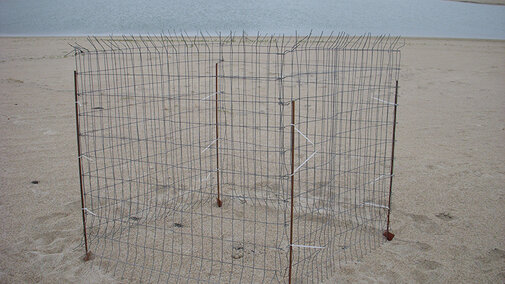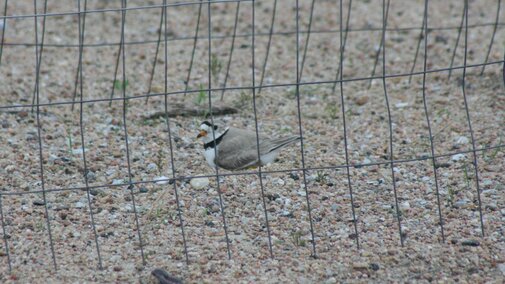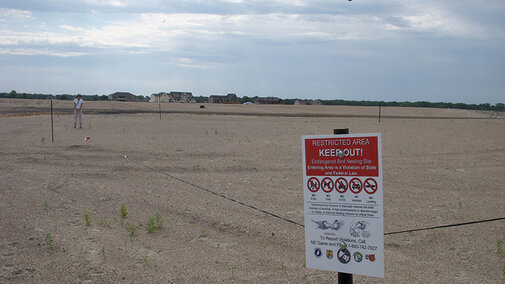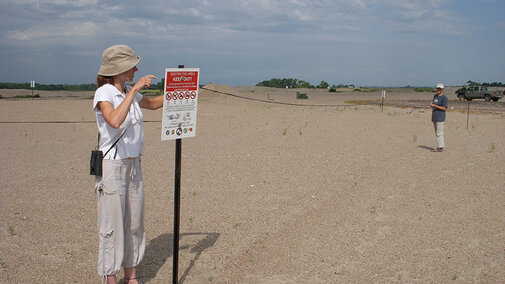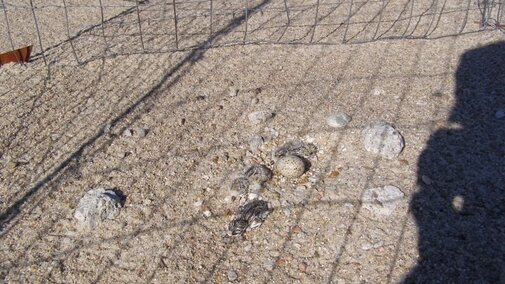Letters of the Law
Interior Least Terns and Piping Plovers are protected under federal and state laws. It is important to understand the laws that protect terns and plovers and why they are in place.
They are protected by the:
- Federal Endangered Species Act
- Federal International Migratory Bird Treaty Act
- Nebraska Nongame and Endangered Species Conservation Act
Why do they need protection?
Sadly, the numbers of Interior Least Terns and Piping Plovers have declined to such low levels that legal protection is necessary to ensure their continued existence not only in Nebraska but across their ranges. Actions that seem trivial to us, such as flushing birds off of nests, can have serious consequences for them; they need every opportunity to reproduce, so disturbing the birds in any way can be considered harassment.
The tern and plover conservation partnership takes several actions to protect terns and plovers nesting at sand and gravel mines and lake shore housing developments.
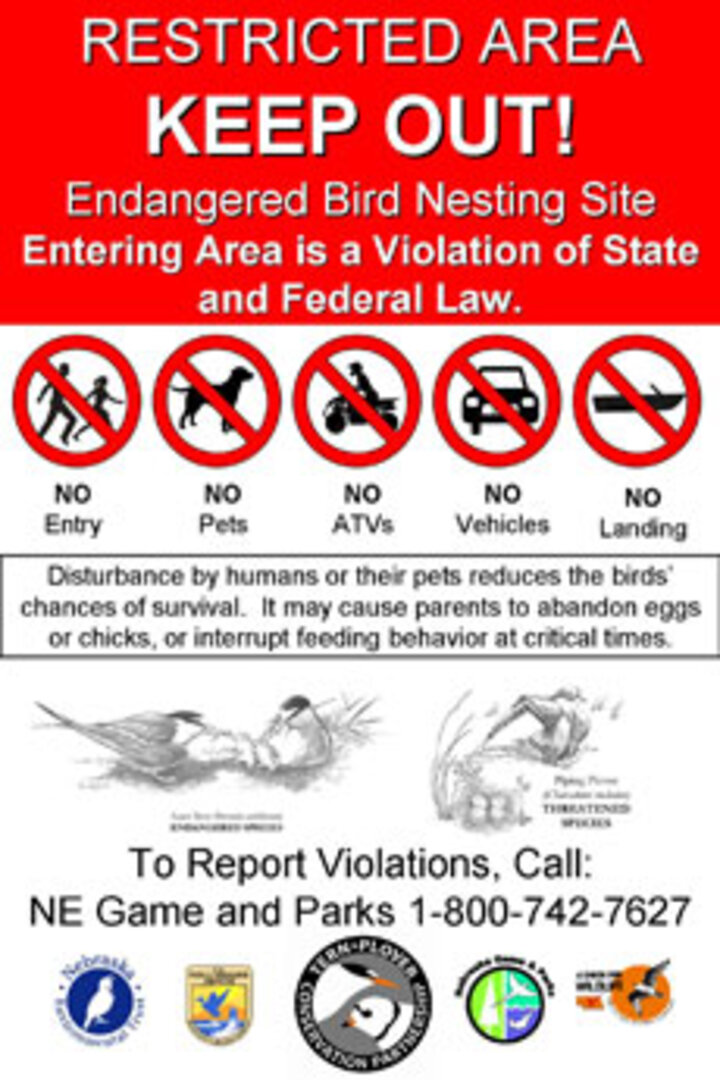
Nest Protection
We place keep out signs around nesting areas at sand and gravel mines and lakeshore housing developments during the nesting season.
We place wire mesh exclosures around Piping Plover nests to protect nests from predation. These exclosures have large enough openings to allow adult plovers to easily get to and away from the nest but small enough to prevent most predators from getting to the nest.
Interior Least Terns fly down to their nest and will not accept having wire exclosures around their nest. We place a large boundary around tern colonies by attaching black cord between keep out signs to prevent people from walking into and disturbing nesting colonies.
Safer Nesting Area
Interior Least Terns and Piping Plovers can be deterred from nesting in unsafe areas and attracted to nesting in safe areas - these techniques MUST be completed before terns and plovers arrive in an area. To deter birds, we install grids of Mylar flagging on the sand. When the Mylar blows in the wind it rustles and sweeps over the sand discouraging the birds from using the area. Birds can be also be deterred from nesting in an area by planting a quick growing grass (e.g. rye)or covering the sand with topsoil.
To attract birds to safer nesting areas, we spread a thin layer of fine gravel containing small pieces of driftwood or rocks over the sand; this is attractive because terns and plovers often place their nests near debris on the sand. Why? The birds may use the debris as a landmark helping them find their nest or the debris may block the wind so blowing sand does not cover the nest.
